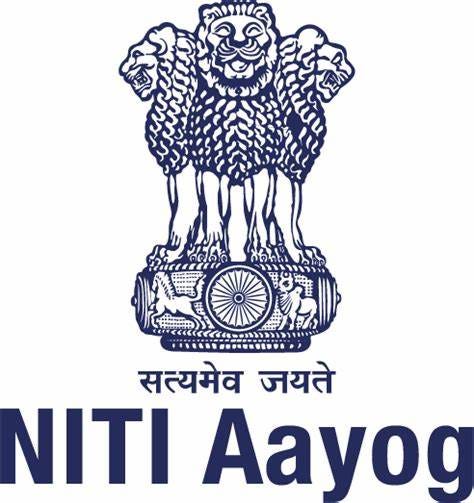Why India’s 40% GST on Zero-Sugar Beverages is Bad Policy — And Should Not Be Treated Like Tobacco or Pan Masala
India’s recent GST overhaul puts carbonated drinks — including zero-sugar, “diet” and “sugar-free” soft drinks — into the same 40% tax bracket as tobacco products, pan masala, and luxury vehicles. Ostensibly, the goal is to curb non-communicable diseases (NCDs) by discouraging unhealthy consumption. But lumping zero-sugar sodas with genuinely harmful goods is a mistake that undermines both public health and economic logic.
Sugar-Free Is Not Sin: Understanding the Science
Let’s get the facts straight. The scientific case for taxing sugar-sweetened beverages (SSBs) is robust: high consumption of sugary drinks increases risk for obesity, diabetes, and dental decay. The World Health Organization (WHO) and governments worldwide have endorsed sugar taxes to incentivize reformulation and healthier choices.
But shifting to sugar-free alternatives is exactly what such policies are supposed to encourage. Research from the UK shows that sugar taxes, when designed right, led to a 46% reduction in the sugar content of soft drinks due to massive industry reformulation — all while low- and zero-sugar variants multiplied on supermarket shelves and became the “default” for many consumers.
The harm is in the added sugar, not the fizz, color, or presence of non-nutritive sweeteners like aspartame or sucralose. If policy treats all carbonated drinks as equally “sinful,” then it punishes both reformulation and consumer effort to cut sugar — a perverse outcome.
Zero-Sugar: The Benefits and Busting the Myths
1. Weight and Metabolic Health:
Randomized controlled trials consistently show that substituting sugary sodas with diet or zero-calorie drinks supports weight loss and better glycemic control, without raising blood glucose — crucial for diabetics or those at risk. No, zero-sugar sodas do not “make you fat,” as some headlines claim. The strongest causal evidence says they help weight management compared to their sugary counterparts.
2. Dental Health:
Free sugars are the main driver of dental caries worldwide. Sugar-free alternatives don’t feed dental bacteria that cause decay. Acidity in all sodas still poses risks to teeth, but this is far less damaging than the potent effect of sugar.
3. Sweetener Safety:
What about aspartame and cancer headlines? Both the WHO/FAO Joint Committee (JECFA, 2023) and the European Food Safety Authority (EFSA) have reviewed the evidence exhaustively and reaffirmed that aspartame, sucralose, and permitted sweeteners are safe within accepted daily intake limits for humans. No regulator has found credible evidence of harm from typical consumption.
Why the 40% GST Slab is a Mistake
- Misclassifies the real harm: Putting zero-sugar sodas in the same category as cigarettes, pan masala, or low-tariff sugar confections (which often face just 5% GST) confuses the actual health target. The aim is reducing added sugars, not penalizing the act of drinking sparkling water mixed with non-caloric flavor.
- Removes incentive to reformulate: International best practice — like the UK Soft Drinks Industry Levy — taxes by sugar content, explicitly rewarding companies that cut sugar and encouraging consumers to make better choices. Blanket taxes on all carbonated drinks make that incentive vanish
- Distorts prices, hurts consumers: Lower-income groups are hit hardest by regressive “sin” taxes. Making healthier substitutions more expensive removes affordable, lower-calorie options.
- Undermines credibility: When mithai or high-sugar sweets are taxed at much lower rates than sugar-free sodas, the GST regime sends mixed signals and loses credibility as a tool for public health, not just revenue.
The Way Forward: Tax Sugar, Not Substitutes
India should adopt a sugar-threshold approach for beverage taxation, as recommended by WHO and proven effective worldwide:
- Tax only those beverages that exceed clear sugar-content thresholds (e.g., ≥5g/100ml and ≥8g/100ml), and exempt zero-sugar/zero-calorie drinks entirely, or tax them at the standard GST rate.
- Pair SSB-tax revenues with investments in clean water and NCD prevention — making the policy a “win-win-win” for health, budgets, and fairness
Bottom Line
Zero-sugar sodas should never be in the same tax basket as tobacco or high-sugar soft drinks. Public health policy must reward, not punish, efforts to cut sugar and improve diets. India has the opportunity — and the research — to get this right. Let’s tax the problem, not the solution.
References available on request. All facts presented here are based on the latest scientific evidence and the cited global policy experiences.
- https://www.gov.uk/guidance/check-if-your-drink-is-liable-for-the-soft-drinks-industry-levy
- https://pubmed.ncbi.nlm.nih.gov/24862170/
- https://pubmed.ncbi.nlm.nih.gov/29760482/
- https://www.nature.com/articles/s41366-023-01393-3
- https://pmc.ncbi.nlm.nih.gov/articles/PMC4717883/
- https://www.nature.com/articles/sj.bdj.2011.823
- https://www.who.int/news/item/14-07-2023-aspartame-hazard-and-risk-assessment-results-released
- https://www.fao.org/food-safety/news/news-details/en/c/1644792/
- https://www.efsa.europa.eu/en/press/news/131210
- https://www.news18.com/business/40-gst-on-sugary-drinks-but-only-5-on-mithai-a-sweet-tax-contradiction-under-gst-2-0-ws-el-9550796.html
- https://iris.who.int/bitstream/handle/10665/374530/9789240084995-eng.pdf
- https://www.who.int/europe/publications/i/item/WHO-EURO-2022-5721-45486-65112
